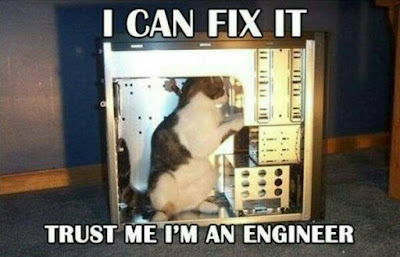*Technology is a breeze, for over 6 years I've been trying to find a definitive answer as to, "Why people believe lies before they believe the truth", baffling.
*They need $10,000, what are they building just 1?
*They need $10,000, what are they building just 1?
You've probably seen stories about drone strikes in the news. The U.S. military has been using drones (also referred to as "unmanned aerial vehicles" or "UAVs") with mixed success since 2001, when they were first used in Afghanistan. While drones have provided the U.S. military with the ability to perform airstrikes in highly sensitive areas, modern weaponized drones are anything but perfect. In particular, U.S. military drones have been criticized for their lack of precision, leading in some cases to unnecessary civilian deaths.
This is where we come in: we think we can build a better drone for a fraction of the price.
We're DIY Drone Labs, a group of three MIT engineering students who have been experimenting with drones built using open-source components like the Arduino microcontroller and BeagleBoard single-board computer. We think for just a few thousand dollars, we can build a prototype drone that has more accurate image-capture and image-processing abilities than the current generation of drones being used by the U.S. military. What's more, we're working with explosives experts to design an alternative to the Hellfire missiles being used by U.S. military drones. We think we can engineer a new kind of explosive that's capable of performing strikes with surgical accuracy, thereby greatly reducing the potential for unnecessary civilian casualties.
The U.S. Department of Defense (DoD) has already expressed interest in our project and the speed at which it is progressing. While the DoD currently has a number of advanced drone projects in development, it will likely be years before any of these vehicles see the light of day and there's a pressing need for more advanced drones in the air right now. That's why we're asking the Kickstriker community for support, so that the three of us (Brandon McCartney, Natassia Zolot and Radric Davis) can spend the summer focusing on the Panopticopter, a weaponized drone that will incorporate everything we've learned from years' worth of experiments. Our goal is to have a working prototype of the Panopticopter ready for testing by the end of summer. Can you help us get there?
Of course, there's something in it for you as well. Check out our reward levels to see what you'll get for helping push the Panopticopter project to the finish line. We're giving away signed schematics, videos of tests performed in our lab in Cambridge, MA and do-it-yourself drone building kits (non-weaponized, of course). As an added bonus for the Kickstriker community, if we meet our funding goal, we will release all of our schematics and source code for the Panopticopter under a Creative Commons license, making it the world's first open-source drone!
Thanks in advance for your support,
The DIY Drone Labs Team (Brandon, Natassia and Radric)
























